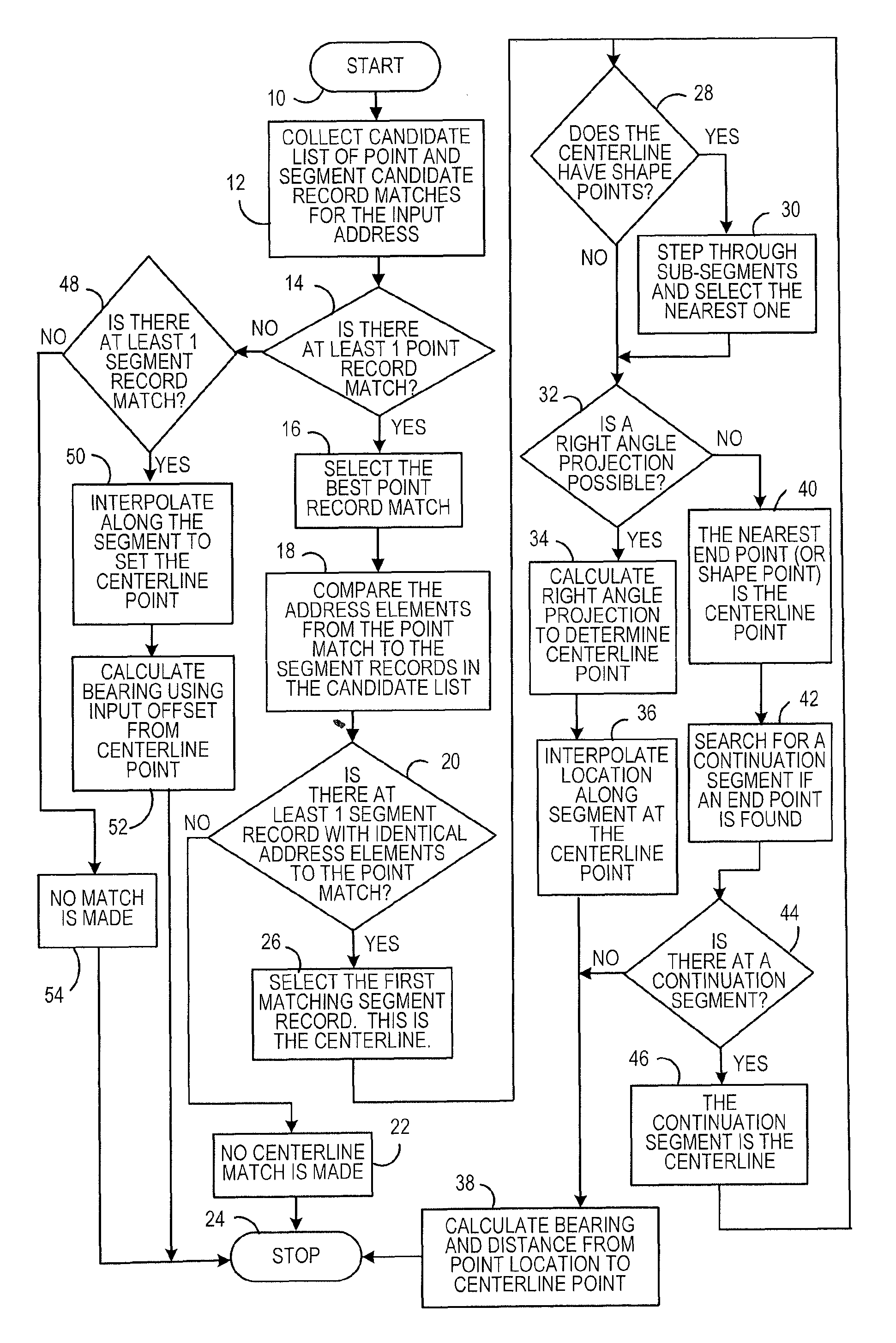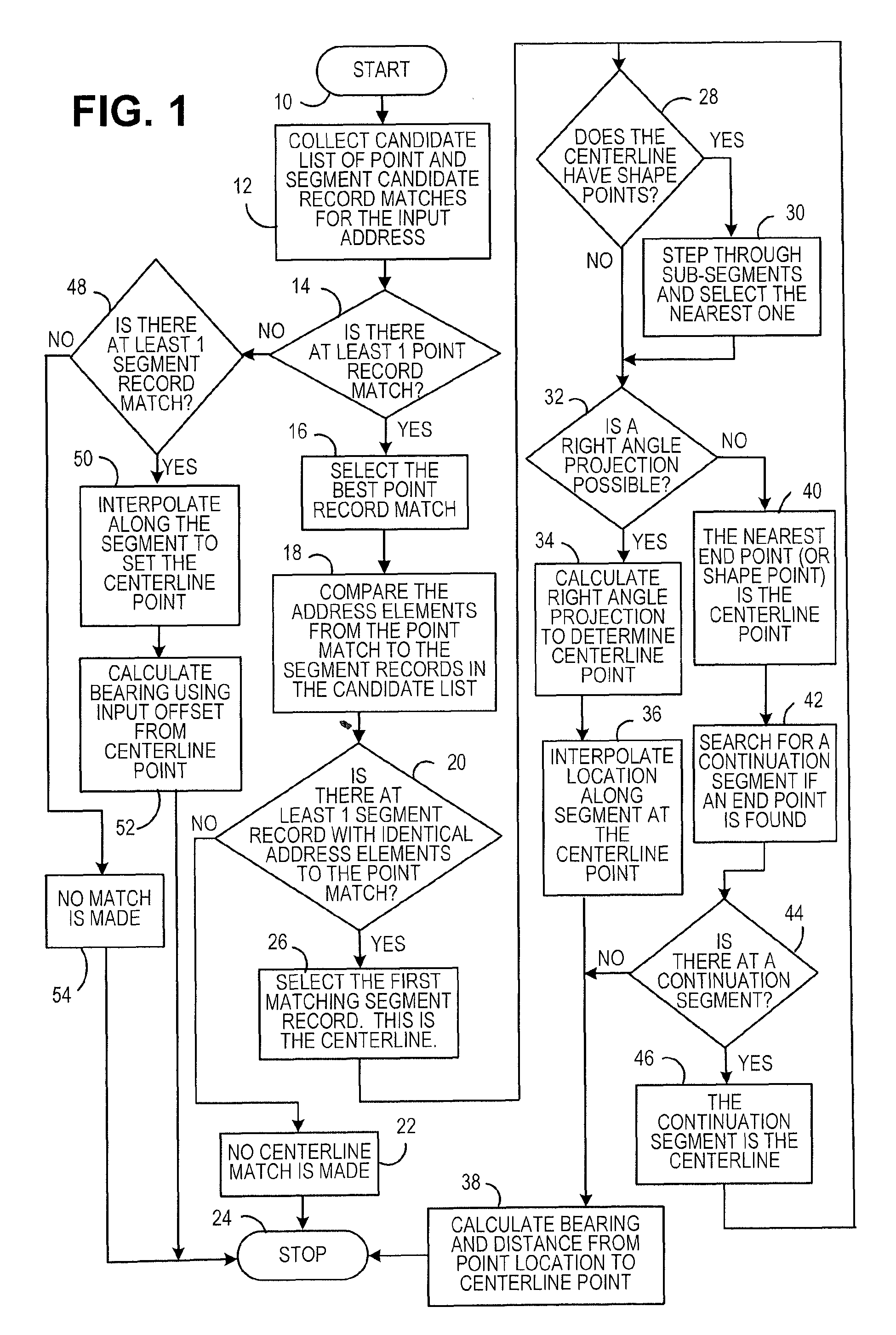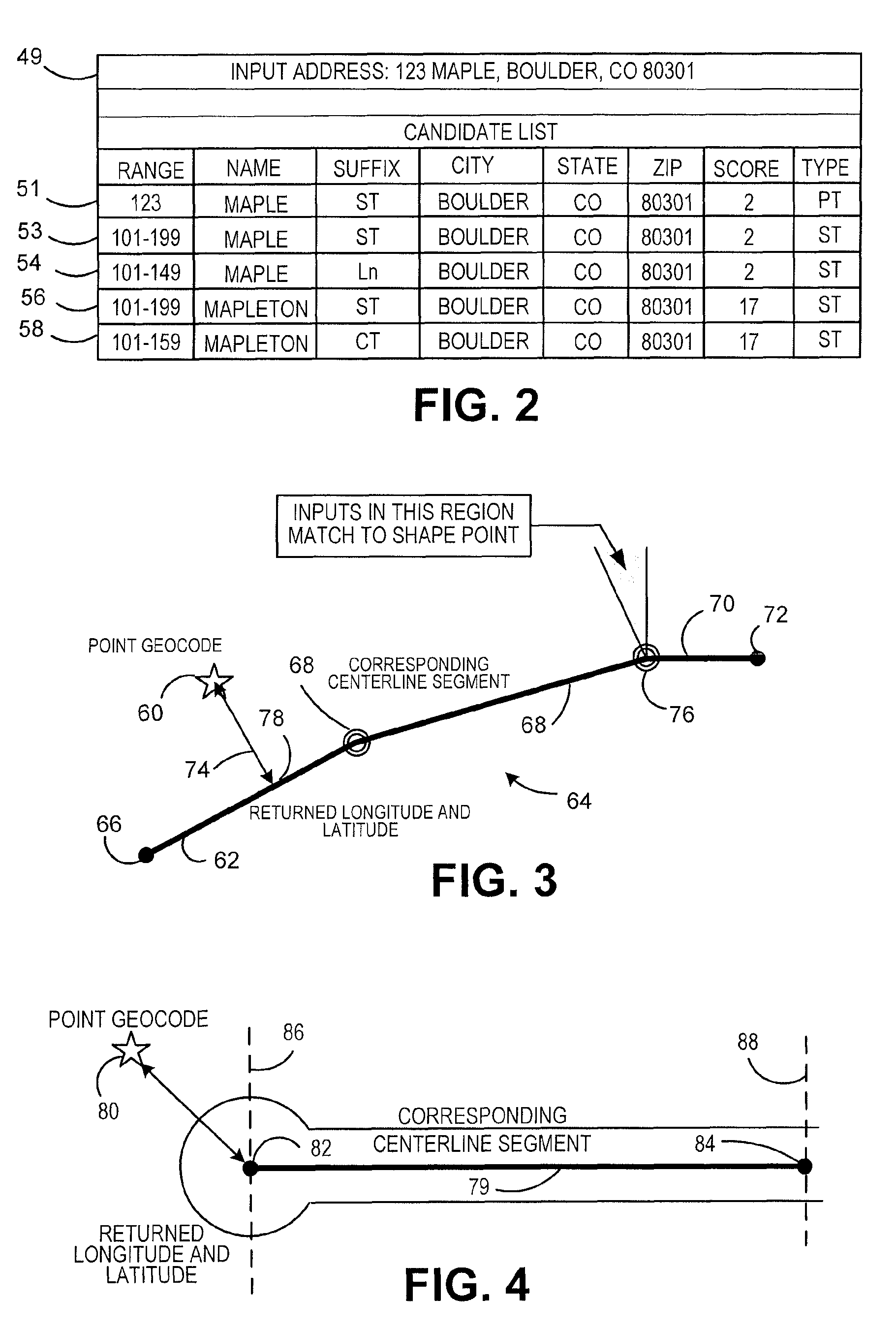Method for assignment of point level address geocodes to street networks
a technology of point level address and street network, applied in the field of geocoding, can solve the problems of inability to tie a point geocode to its parent street segment, insufficient simple correction of address range, and inability to identify appropriate streets, etc., to achieve the effect of improving the accuracy of identifying appropriate streets
- Summary
- Abstract
- Description
- Claims
- Application Information
AI Technical Summary
Benefits of technology
Problems solved by technology
Method used
Image
Examples
Embodiment Construction
[0020]Reference is now made to FIG. 1. The flow chart illustrates the assignment of point level address geocodes to street networks. A solution is created that will enable a calling application to realize a latitude—longitude that lies on the centerline of the proper adjacent street segment. This will tie the point data back to the underlying street data set and allow integration with street-dependent solutions. To remove the ambiguity from these applications, the process enables, for example, a calling application to realize a latitude—longitude that lies on the centerline of the parent street segment. This will tie the point data back to the underlying street data set and allow integration with street-dependent solutions. A fast and accurate method is implemented to find the geocode on the street centerline that can be utilized in real time. By making the process dynamic, the method will work on any appropriate mix of point data and centerline data sets, even in the situation wher...
PUM
 Login to View More
Login to View More Abstract
Description
Claims
Application Information
 Login to View More
Login to View More - R&D
- Intellectual Property
- Life Sciences
- Materials
- Tech Scout
- Unparalleled Data Quality
- Higher Quality Content
- 60% Fewer Hallucinations
Browse by: Latest US Patents, China's latest patents, Technical Efficacy Thesaurus, Application Domain, Technology Topic, Popular Technical Reports.
© 2025 PatSnap. All rights reserved.Legal|Privacy policy|Modern Slavery Act Transparency Statement|Sitemap|About US| Contact US: help@patsnap.com



